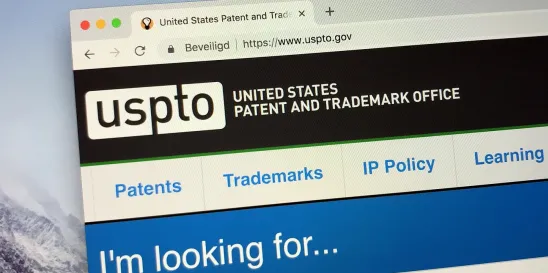When Dynamic Drinkware was decided in 2015, commentators debated whether differences in the language of the American Invents Act (AIA) version of 35 USC § 102 would shield AIA patents from its restrictions. Now, U.S. Patent and Trademark Office (USPTO) Director Kathi Vidal has taken the position that AIA patents are not governed by Dynamic Drinkware, and so qualify as prior art as of the earliest priority date claimed, without regard to whether the cited patent document is entitled to the priority claim.
Penumbra, Inc. v. RapidPulse, Inc.
The Patent Trial and Appeal Board (PTAB) recently addressed this issue in the context of an inter partes review (IPR) proceeding, Penumbra, Inc. v. RapidPulse, Inc. (IPR2021-01466). Director Kathi Vidal designated the PTAB’s final written decision as precedential, making it the official USPTO position.
A major issue in the IPR proceeding was the prior art date of an asserted patent (“Teigen”). Teigen was filed on August 7, 2020, but claimed priority through a PCT application to two provisional applications, filed on December 12, 2018, and July 24, 2018, respectively. Teigen only would qualify as prior art as of the filing dates of the provisional applications.
RapidPulse argued that, under Dynamic Drinkware, Teigen only could qualify as prior art if it was entitled to its priority claims. That is, Penumbra only could rely on Teigen as a prior art document if it could show that at least one claim of the patent is supported by the provisional application(s). Penumbra countered by asserting that Dynamic Drinkware does not apply to AIA patents, and so Penumbra met its burden by demonstrating that the disclosure relied upon in its obviousness argument was adequately supported by the provisional applications.
The Dynamic Drinkware/Wertheim Requirements
In Dynamic Drinkware, the Federal Circuit held that a petitioner relying on a pre-AIA patent document as of its priority date must show that at least one claim of the asserted document is supported by the priority application, in addition to showing priority application support for the disclosure relied upon. The requirement that at least one claim be supported traces back to the 1981 decision in In re Wertheim, 646 F.2d 527 (CCPA 1981), which concerned an obviousness rejection of a patent application. Similar to the Teigen reference at issue in Penumbra, the cited patent in Wertheim (“Pfluger”) was filed after the patent application at issue but claimed priority (as a continuation-in-part) to a previously filed parent application.
The USPTO had cited Pfluger under pre-AIA § 102(e), which provides:
A person shall be entitled to a patent unless —
(e) the invention was described in a patent granted on an application for patent by another filed in the United States before the invention thereof by the applicant for patent …
The CCPA noted that § 102(e) codified the 1926 Supreme Court decision in Alexander Milburn Co. v. Davis-Bournonville Co., which essentially held that a patent qualifies as prior art as of its filing date because, but for “the delays of the Patent Office” the patent would have been published on its filing date. Against that backdrop, the CCPA determined that § 102(e)’s references to “the invention” and “an application for patent” “necessarily invokes § 120 rights of priority for prior co-pending applications.” The court stated:
If, for example, the PTO wishes to utilize against an applicant a part of that patent disclosure found in an application filed earlier than the date of the application which became the patent, it must demonstrate that the earlier-filed application contains §§ 120/112 support for the invention claimed in the reference patent. For if a patent could not theoretically have issued the date the application was filed, it is not entitled to be used against another as ‘secret prior art,’…. We emphasize that the above noted statutes, §§ 102(e), 120, and 112, speak with reference to some specific claimed subject matter by use of the terms emphasized. It is axiomatic in patent law that questions of description, disclosure, enablement, anticipation, and obviousness can only be discussed with reference to a specific claim which identifies ‘the invention’ referred to in the statutes.
Thus, the court interpreted pre-AIA § 102(e) as requiring at least one claim of the cited patent to be supported by the earlier-filed application in order to qualify as prior art as of the earlier filing date.
AIA Patents Are Different
The AIA replaced pre-AIA § 102(e) with § 102(a)(2) and § 102(d), as well as enacting new § 100(i)(1)(B). The PTAB considered these statutes in Penumbra and found that the different statutory language eliminated the Wertheim/Dynamic Drinkware requirement to evaluate whether any claim in an asserted patent is actually entitled to its priority claim. In particular, the PTAB noted that § 100(i)(1)(B) and § 102(d) draw distinctions between being entitled to a right of priority (for patentability purposes) and being entitled to claim a right of priority (for prior art purposes).
§ 102(d) governs the prior art date of AIA patent documents, and reads in pertinent part (with emphasis added):
For purposes of determining whether a patent or application for patent is prior art to a claimed invention under subsection (a)(2), such patent or application shall be considered to have been effectively filed, with respect to any subject matter described in the patent or application –… (2) if the patent or application for patent is entitled to claim a right of priority… based upon 1 or more prior filed applications for patent, as of the filing date of the earliest such application that describes the subject matter.
As the PTAB noted, the section of the MPEP explaining § 102(d) (MPEP § 2154.01(b)) states that “the question of whether a patent or published application is actually entitled to priority or benefit with respect to any of its claims is not at issue in determining the date the patent or published application was ‘effectively filed’ for prior art purposes” (emphasis added). The PTAB noted other similar USPTO guidance, including a 2018 memorandum to the Patent Examining Corps, and other nonprecedential PTAB decisions, including Apple Inc. v. Telefonktiebolaget LM Ericsson, No. IPR2022-00341. It distinguished Forescout Technologies, Inc. v. Fortinet, Inc,, No. IPR2021-01328, because in that case the petitioner had failed to show support for the subject matter in the priority application.
As noted above, Director Vidal has designated the Penumbra decision as precedential. Thus, it will be binding on the USPTO Examining Corps and PTAB, unless and until it is overturned by the Federal Circuit. Under the decision, an AIA patent document can be cited as prior art as of the filing date of its priority application without having to show that at least one claim is supported by the priority application. There is still a requirement to show that the priority application describes the subject matter at issue, and the PTAB noted that the cited AIA patent document must “meet the ‘ministerial requirements of §§ 119 and 120” for the relevant priority claim. While the PTAB found the latter to be satisfied (or not challenged) in Penumbra, it will be interesting to see if this decision leads to more litigation around those “ministerial” requirements, and how much deference will be given to the USPTO’s acknowledgment of a priority claim during prosecution of the cited patent.





 />i
/>i

